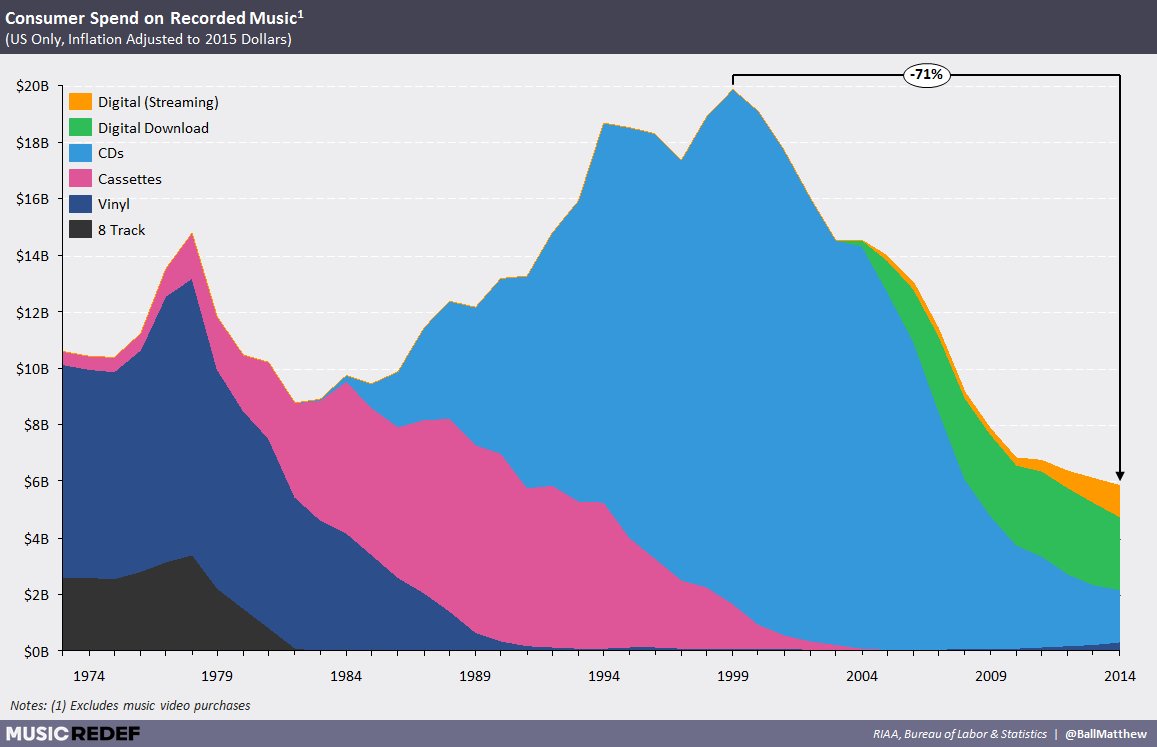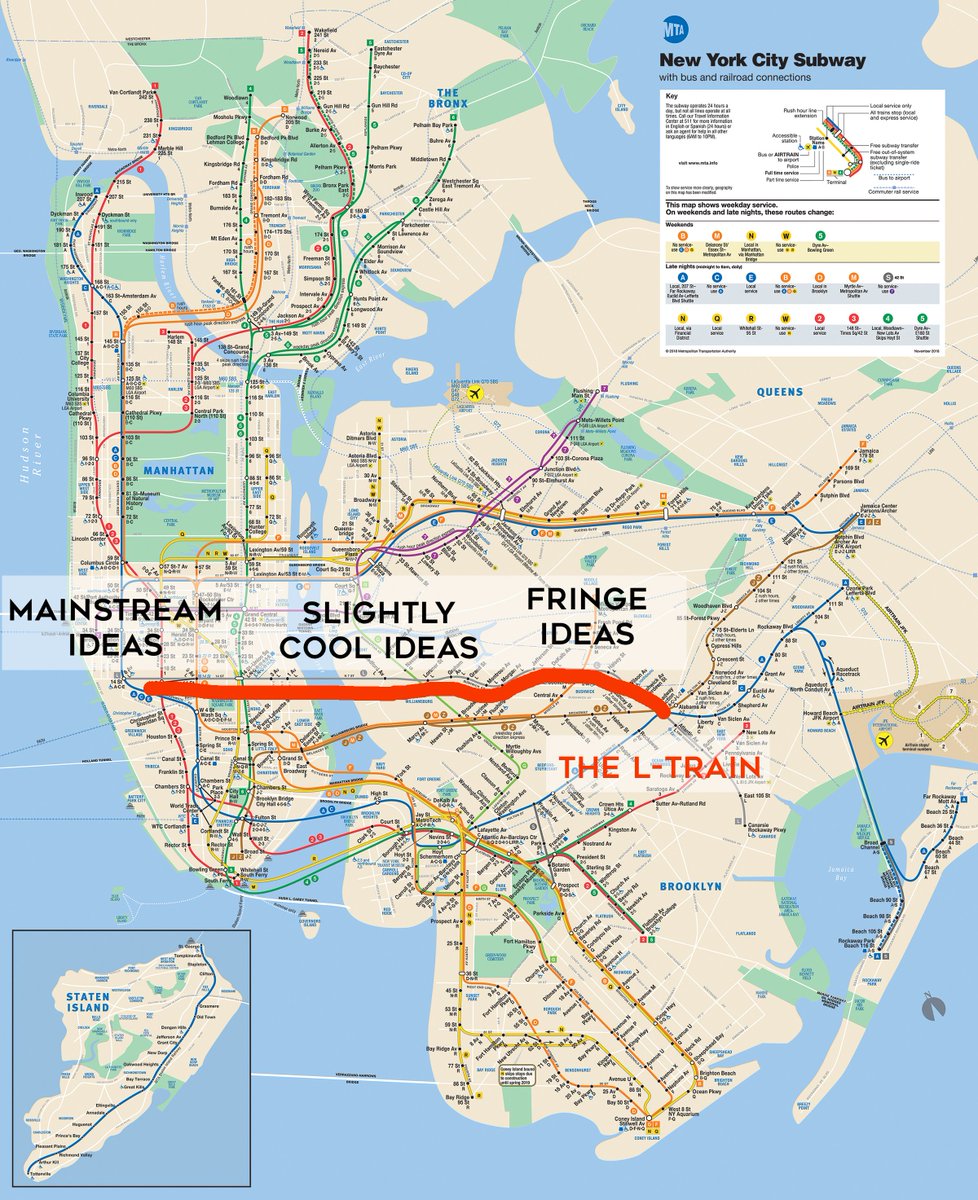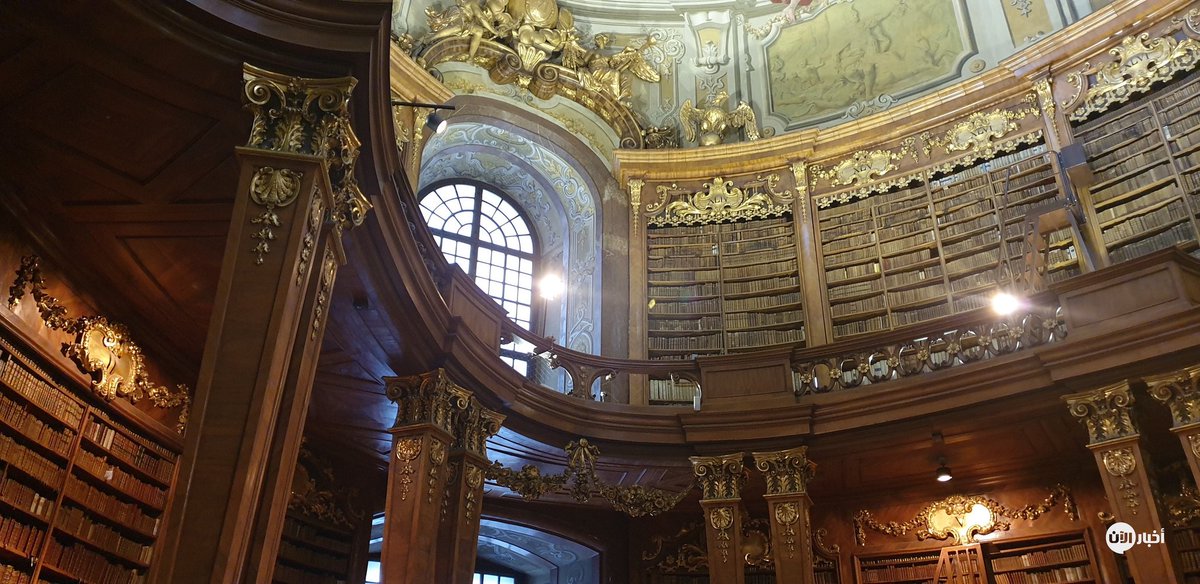🎶
If you wanted to hear him play, you had to listen in person. Fans had personal relationships with their favorite musicians.
For the first time, music was infinitely replicable and could last forever. Since fans didn’t have to listen to music live, they could support their favorite musicians in new ways.
Artists lacked the skills and capital required to distribute their music. They had to live in NY, LA, or Nashville, where they did favors for industry insiders and paid their dues.
Small groups of “expert” executives called the shots.
Their business models depended on mass market reach and distribution, so they financed music for people with “average” taste.
The big got bigger, but it was hard for small artists to break in.
The internet changed things. Consumer spend on recorded music plummeted, falling 71% from 1999 to 2014.

He used to make Top 40 playlists and upload them to torrent sites. Then, he slipped his own track in there and people thought it was a hit.
Perception became reality when I started dancing to it at Bar Mitzvahs 😂😂
The laws of supply and demand no longer work when there’s infinite supply and replication is easy.
The music industry needs a new revenue stream.
Today, 87% of revenue now comes from concerts versus recorded music. Live music is the bedrock of artists’ income streams.
Playlists trump albums and there's a new set of rules:
1) Release music more often.
2) Focus more on singles, and less on albums.
3) Record videos to connect with fans.
1) Playlists
2) Viral videos and memes
Power has shifted from gatekeepers to the wisdom of the crowd.
Why?
Each song generated millions of social media impressions, downloads, and streams. No song left behind.
They’re brilliant community builders — they’re real, accessible, and engage fans directly.
Gangnam Style was so popular that tourism to South Korea increased more than 15% the year after it was released.
Music used to be the bottom of the funnel, but now, it’s the top of the funnel.
With brand deals, startups, and merchandise sales, artists are building a portfolio of revenue streams. People don’t just buy music — they buy the brand.
Artists are building passionate communities.
Fans have direct relationships with their favorite artists.
We watch them make music, they share their secrets with us, they’re always with us on social media, and they come to our hometown to play music for us.
They’re our best friends.


















